Soft autumn: Embracing the warmth of the season's color palette

Key Takeaways
- Knowing when you're a soft autumn color palette is all about embracing warm undertones, low contrast and mutedness in your coloring and closet.
- Skin, hair and eye characteristics combine to define the soft autumn type, calling for harmonious color selection of clothing, accessories and makeup.
- Core wardrobe neutrals like soft taupe, warm gray and olive green provide a great base, and mains and accents like dusty rose and teal give you options for expression.
- High contrast, saturated or icy colors will overpower soft autumn features, so by choosing softer options there is a sense of visual balance and natural warmth.
- A touch of texture and some subtle prints instills dimension and interest creating an overall style that is timeless and soft autumn friendly.
- Constructing a soft autumn-friendly wardrobe and makeup collection is about curating key staples, seasonal adjustments, and accessories that harmonize with the muted, warm palette for a classic, versatile appearance.
Soft autumn colour palette of course means warm, muted shades with soft undertones. These colors may incorporate moss green, soft brown, dusty rose and warm beige.
Folks apply this palette to fashion, home design, and graphic projects for a calm, natural appearance. All the shades mix well with each other for that hazy, blended appearance.
For those desiring to pair the colors that feel cozy but understated, soft autumn fares well in many ways.
What Defines a Soft Autumn?
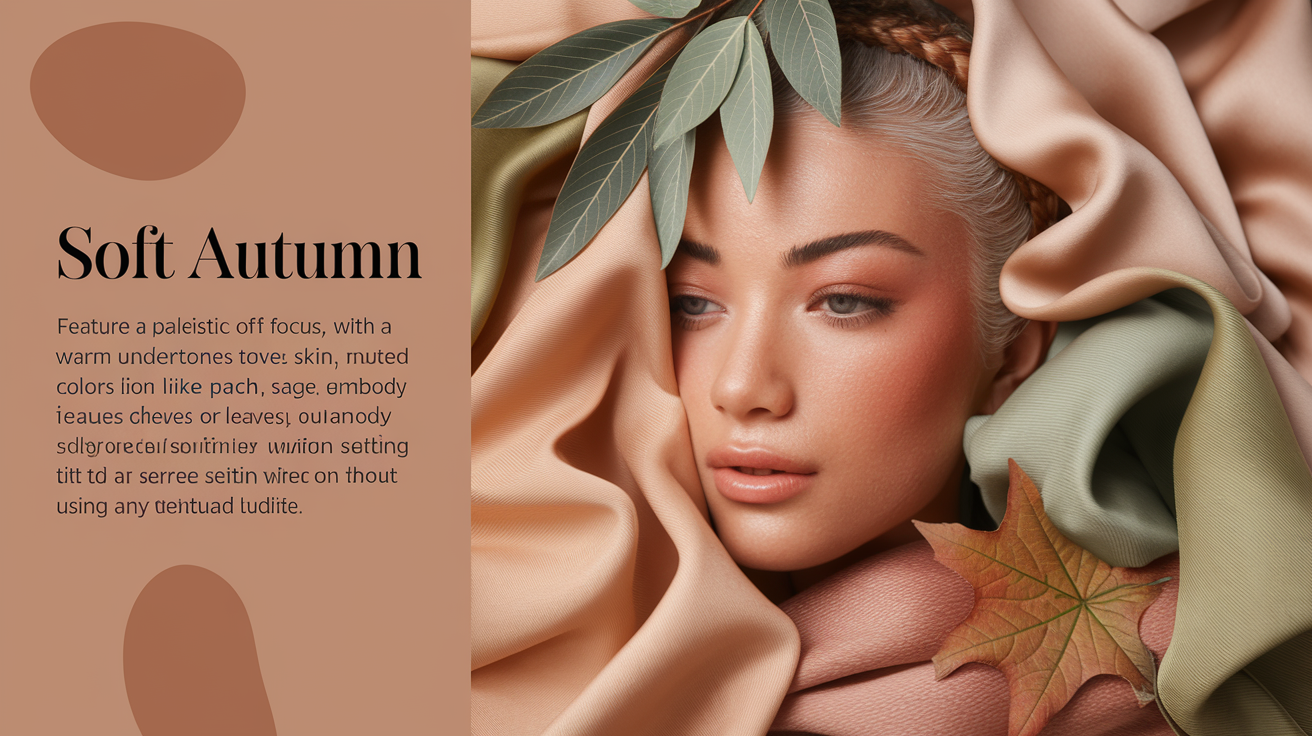
Soft Autumn is a warm, muted, slightly blended colourseason. This palette is defined by its gentle, earthy vibe and minimal contrast between hair, eyes, and skin. These characteristics arise from the combination of undertone, hair and eye color — all converging to create a balanced appearance that eschews overly harsh or highly saturated colors.
This muted, understated quality—commonly referred to as "cloudy"—distinguishes Soft Autumn from the other autumns.
1. The Skin's Undertone
Soft Autumn skin reveals warm undertones with a golden or sun-kissed glow. An easy undertone test is to see how gold and silver jewelry look against you. Gold tends to accentuate the warmth and silver can appear flat.
This warmth is never brassy or orange, but soft and mellow, mixing well with muted earth tones. Soft Autumns, on the other hand, almost always gravitate towards beige, peach, or light olive bases.
Because undertone directs color selections, these folks typically shine in grounded hues like olive, camel and blush. Seasonal color analysis, nailing the correct undertone is step one–it's what anchors your entire palette selections thereafter.
2. The Hair's Nuances
Most Soft Autumns sport brown hair – from light golden brown to medium or even dark brown, with hints of gold, red or auburn. The hair rarely looks stark or inky, but instead has a softness that echoes the skin's warmth.
It is this muted quality which assists in blending the hair with the outfit. Even when shaded more deeply, the warm highlights keep things soft, not harshly contoured or heavily contrasting.
Hair shades span from dark blonde to deep brown, but consistently with warmth and softness, never intense.
3. The Eyes' Depth
Soft Autumn eyes are hazel, warm green, soft blue or blue-gray, always veiled in muted color rather than crisp brightness. These eyes tend to appear flecked or misted, never crystal clear or icy.
It's all about depth. The eyes don't have that piercing intensity of some other seasons, so rather, muted, natural tones complement makeup or clothing. That subtle hue transition — imagine moss, taupe or dusty teal — is so perfect in the Soft Autumn color wheel.
In seasonal analysis, eye color verifies the muted, warm quality intrinsic to Soft Autumn.
4. The Overall Contrast
Soft Autumn colors meld with medium to low contrast. Hair, skin and eyes alike are close in depth and tone, forming a cohesive, harmonious look. Whereas Dark Autumn prefers sharp contrasts and Warm Autumn can handle high warm contrast, Soft Autumn's contrast is soft.
As a result, strong or very dark colors can overtax. So it's best to go with soft, earthy shades like blush, olive, or camel. Colored neutrals often work best while bright or dark lips can seem jarring.
| Feature | Soft Autumn | Warm Autumn | Dark Autumn |
|---|---|---|---|
| Chroma | Muted | Clear, rich | Deep, muted |
| Undertone | Warm, soft | Warm, vivid | Warm, deep |
| Contrast | Low to medium | Medium | High |
| Best Colors | Olive, camel, blush | Pumpkin, moss, teal | Espresso, pine, gold |
| Avoid | Bright, dark, cool | Cool, pastel | Light, bright |
The Soft Autumn Color Palette
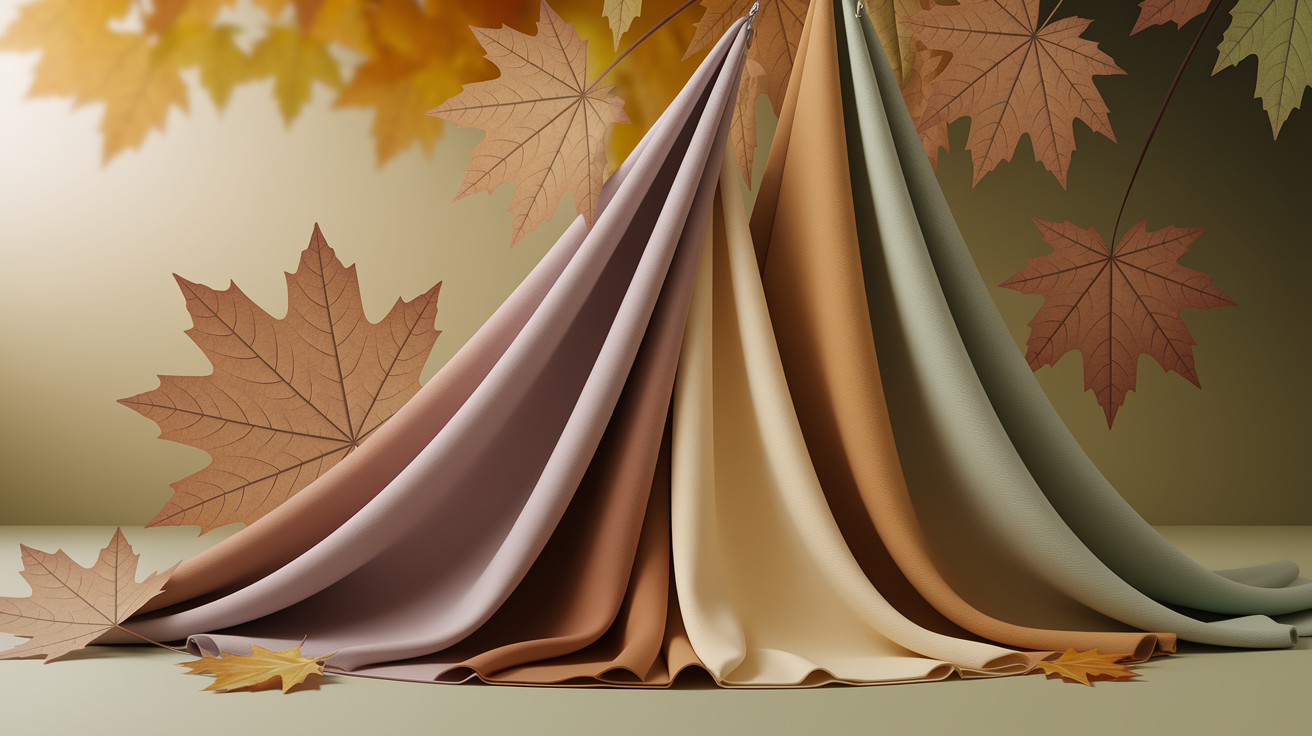
The soft autumn color palette combines warm, subdued hues with a soft, medium-to-dark value. It's inspired by the feel of sun-washed afternoons — combining organic warmth with muted, whispering tones. This palette steers clear of harsh, high-contrast tones like black and pure white, instead opting for shades with slight green or warm brown undertones.
It fits those with golden, sun-kissed skin, usually brown hair with gold, red or light auburn highlights. The palette is understated, stylish, and simple to customize.
| Key Color | Emotional Impact |
|---|---|
| Olive | Calm, grounding |
| Blush | Gentle, approachable |
| Camel | Comfort, stability |
| Beaver | Warmth, reliability |
| Dusty Rose | Softness, nostalgia |
| Turkish Blue | Tranquility, balance |
| Teal | Refreshment, creativity |
| Warm Pink | Warmth, friendliness |
| Taupe | Subtlety, sophistication |
Core Neutrals
- Beaver (warm taupe)
- Camel
- Olive
- Taupe
- Soft mushroom gray
Core neutrals provide a strong foundation on which to build outfits. They fare well from business to casual settings. They're effortless to mix with primary or highlight tones for an appearance that reads complete but never boisterous.
Think camel pants with a taupe top or olive skirt and beaver cardigan. These neutrals blend with soft pinks or teal for extra intrigue while maintaining the calm of the look.
Main Colors
Dusty rose, olive, Turkish blue, and soft gold are staples of this palette. These are great colors to wear as a shirt, dress, or outer layer. They complement warm undertones and suit light or dark hair.
Soft autumn main colors exude a calm, natural vibe — never bold or overzealous. Dusty rose with olive is a soft, earthy statement. Turkish blue with camel provides a subtle contrast that feels harmonious.
Soft gold dressed with taupe or blush creates warmth without the meltdown.
Accent Pops
Accent colors such as teal, soft coral, and warm pink provide lift to soft autumn outfits. Small doses of these — like scarves, shoes, belts, or jewelry — add punching points of interest without clashing.
Teal earrings or a warm pink bag can shake up a neutral combo. The trick is to maintain accents as muted and warm, never bright or icy. Accent pops help show personality while remaining true to the soft autumn vibe.
They work best in small doses, allowing primary and neutral shades to take the lead.
Colors That Clash
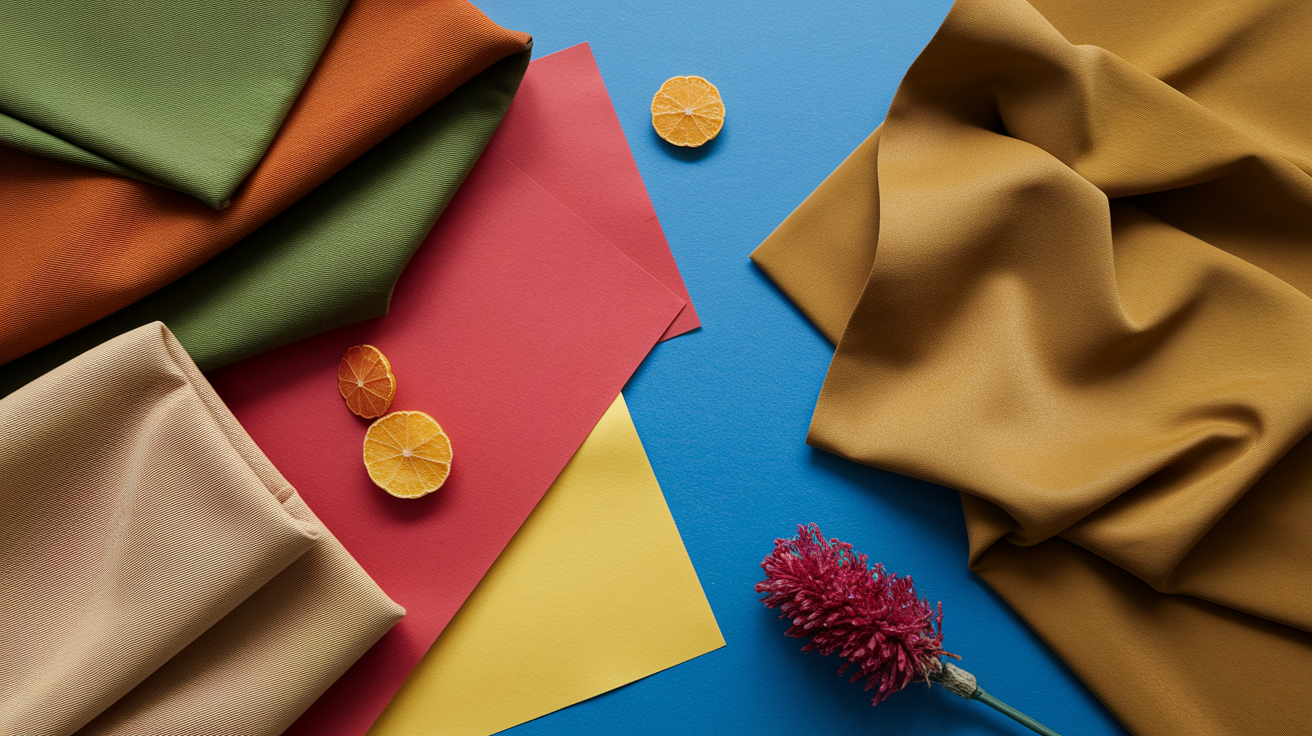
Soft autumns harmonize best with low-contrast, warm and muted shades. Getting your colors wrong creates an unbalanced look that pops for all the incorrect reasons. Some colors, particularly those that are bright, cold or super saturated, will actually compete with soft autumn features rather than amplify them.
Below are colors that do not blend well with soft autumn:
- Icy pastels, like icy mint, pale blue or light lavender, tend to clash by looking too cold and sharp against warm undertones.
- Bright coral, vivid turquoise and electric blue are too bold and pull focus from the wearer's inherent coloring.
- True black and stark winter white are hard contrasts that make skin look washed out or flat.
- Cool emerald and bold jewel tones overwhelm soft autumn coloring resulting in disharmony.
- Rich primary colors, such as true red, cobalt and lemon yellow seldom enhance the understated soft autumn.
These colors that clash can frequently be softened by exchanging for muted versions. Think sage green instead of icy mint or terracotta in place of bright orange. Pairing clashing shades with neutrals, such as olive, warm gray or beige, can tame their effect.
In the end, color harmony is personal, so testing for yourself is essential.
Why Brights Overwhelm
Intense hues, notably saturated renditions of coral, turquoise and primary yellow, can quickly cast a shadow over the gentle glow of soft autumn skin, eyes and hair. These punchy shades captivate attention and detract from the natural harmony of features, generating disharmony.
Psychologically, bold brights can make the wearer feel less like themselves, more exposed — the color is the star, not the support. Soft autumns tend to look more comfortable in earthy or muted colors because they merge with their coloring.
Warm blush, dusty teal and soft apricot are perfect brights alternatives. By sticking with the palette's signature softness to accent her look remains cohesive and approachable.
Why Icy Tones Drain
Icy tones — icy blue, icy pink, frosty mint — are too cool to work with soft autumn coloring. These colors tend to make skin look washed-out or fatigued, harshly emphasizing shadows and sapping the natural radiance.
The iciness of icy tones is the opposite of autumn warmth. Trading these hues for muted, warm versions—think olive, sage, or soft peach—brings back balance.
Color temperature is important in how colors play off your coloring and warm undertones need warm companions.
Why True Black Flattens
Real black is harsh and relentless on tender falls. It can generate harsh edges that suck all the color out of your face and make your features appear less angular and more stern.
Turn instead to gentler options like warm brown, deep olive and warm gray. These hues have depth and warmth, without the bite of black.
Strong contrast between black and softer features can throw off the whole effect, whereas selecting complementary colors works to accentuate natural beauty instead of camouflaging it.
Beyond the Swatches
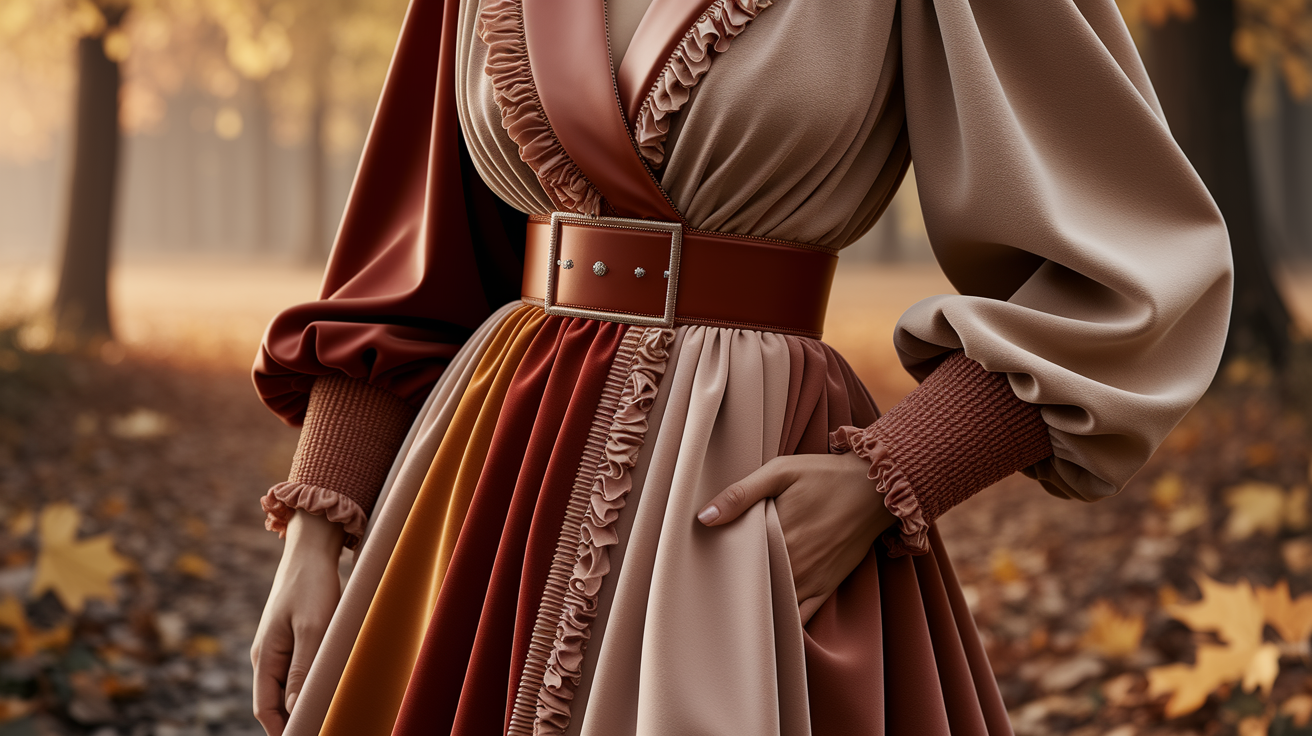
Texture is a subtle yet essential component of the soft autumn palette, particularly for those exploring soft autumn styles. While color captures the imagination, the texture and drape of fabric help manifest the warm hues of the autumn seasons. This understanding is especially handy for individuals who have difficulty differentiating between soft autumn and soft summer, as the right textures highlight the cozy, faded edge of fall.
The Importance of Texture
Texture creates layers in an ensemble without having to add more color. Soft, brushed cotton, suede and lightweight wools pair beautifully with the muted, warm shades of soft autumn palettes. These fabrics keep the look soft and low-contrast, which is a requirement for medium value women—neither dark or light.
Mixing textures — like a matte jersey with a chunky knit — introduces depth and interest. Avoiding shiny or slick fabrics keeps the look soft, not sharp. Wearing textures that play well to soft autumn's gentle contrast are key. Heavy tweeds or rough linens weigh down the look, while smooth silks and soft knits keep ensembles light.
Texture contributes to seasonal color analysis by demonstrating how certain fabrics can transform the appearance of a shade on skin. A lot of people discover that textures like felt or brushed wool impart a soft glow, matching the golden skin tones soft autumns may acquire in summer. Layering textures, not just colors, is one way to add richness to even the simplest of outfits.
The Power of Prints
They help add interest to a soft autumn wardrobe. Florals, tiny ginghams, and smudged patterns are ideal—ie shapes that melt into one another, not strong sticks. Big or high contrasting prints dwarf the soft autumn look and fight with the gentle skin tone.
Prints should incorporate the subdued, warm tones of the palette. Earthy greens, soft blush and camel are good print bases. Just keep prints in check with solids. Wearing a print scarf or blouse with simple trousers maintains the eye's attention.
Prints can be a great way to flaunt some personal style without straying from the soft autumn palette. Even animal prints, if in soft hues, would work.
The Metal Mismatch Myth
The myth that only one metal type works for soft autumns is common. Okay, in reality, warm metals—gold, bronze, or copper—mesh beautifully with the palette, but it's your call. Jewelry in these metals is not brighter than the skin or at odds with soft autumn colors.
Steer clear of cool silver or harsh white gold, as these make ensembles look disheveled. Accessories are personal. Others may want to mix metals, and that can still look correct as long as the metals are not too shiny or cold.
Opting for matte or brushed finishes helps keep the feel soft and in line with the color story.
Creating Your Wardrobe
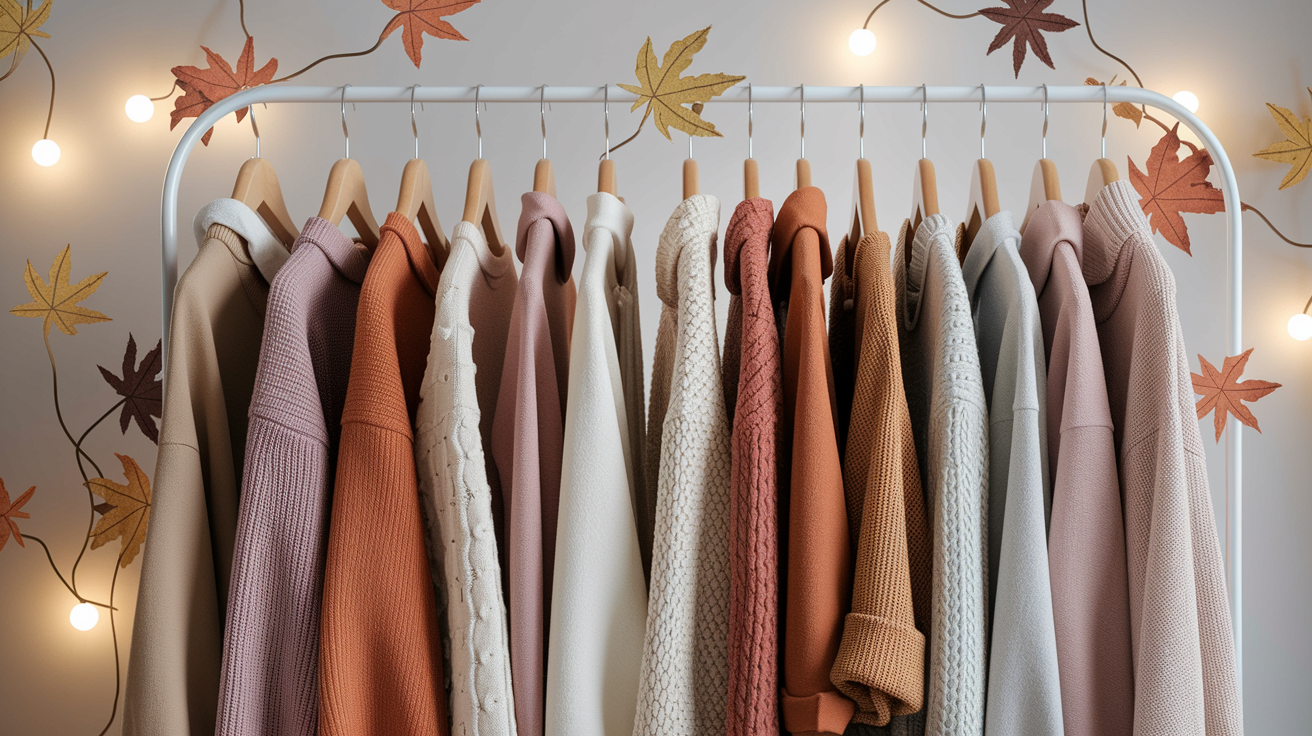
I knew that color was important, but wasn't sure how to figure out what worked for me. It's muted, warm colors with a soft autumn color palette–olive, camel, soft brown, dusty rose, muted teal. These colors are generally flattering for most skin and hair tones, particularly if you have low contrast coloring.
Selecting a core palette and committing to it can aid you in cultivating a mix-and-match system, reducing decision fatigue and making every outfit feel deliberate. A great wardrobe merges comfort, fit and versatility, so each piece works for your lifestyle and body type.
Foundational Staples
- Soft camel or taupe trousers
- Olive green or sage cardigans
- Muted teal or dusty rose blouses
- Warm beige or mushroom-colored knit sweaters
- Light brown or cognac leather shoes
- Earth-toned scarves
- Medium brown tailored jackets
- Soft cream or oatmeal tees
Base pieces should feel effortless to mix and match. By mixing, say, olive with camel or dusty rose with taupe, you're able to create new looks without ever clashing. Soft autumn neutrals are less harsh than black or white, so give mushroom, soft beige or muted olive a whirl as base colors.
One for each staple — they should fit well and feel comfortable, as these are the pieces that get the most wear. Properly-fitting pants and tops can give you confidence and assist you in gliding through your day. By selecting staples in the right tones, you maintain a harmonious wardrobe and allow your natural coloring to shine.
Seasonal Adaptations
Soft autumn palettes can work year-round with a few easy switches. In warmer months, trade heavier fabrics for linen or lighter cotton, and opt for lighter colors such as soft peach or muted coral. For that chilly weather, deep moss greens or burnt orange sweaters layer nicely over your core pieces.
Layering is key—think a soft beige tee under an olive cardigan, or a muted teal scarf and camel jacket. Keep an eye on the season's trends, but keep your main colors the same or your wardrobe won't have that soft autumn look anymore. If you're looking to experiment with a trendy piece, choose it in a soft autumn shade—think a terracotta skirt, or a deep gold top.
Accessory Philosophy
Accessories should never swamp the soft autumn palette. Seek out muted gold jewelry, brown leather belts or olive-toned bags. These elements provide intrigue without introducing sharp contrast.
When selecting scarves or hats, opt for hues that repeat your wardrobe—such as rust, moss or rosewood. Accessories can assist demonstrate your style, whether you prefer minimal pieces or statement studs in earthy tones. The right accessory accentuates your ensemble, so keep the equilibrium subtle.
If you want to pop, go for a statement necklace in a warm, muted color rather than the bright jewel tones.
A Soft Autumn Makeup Guide
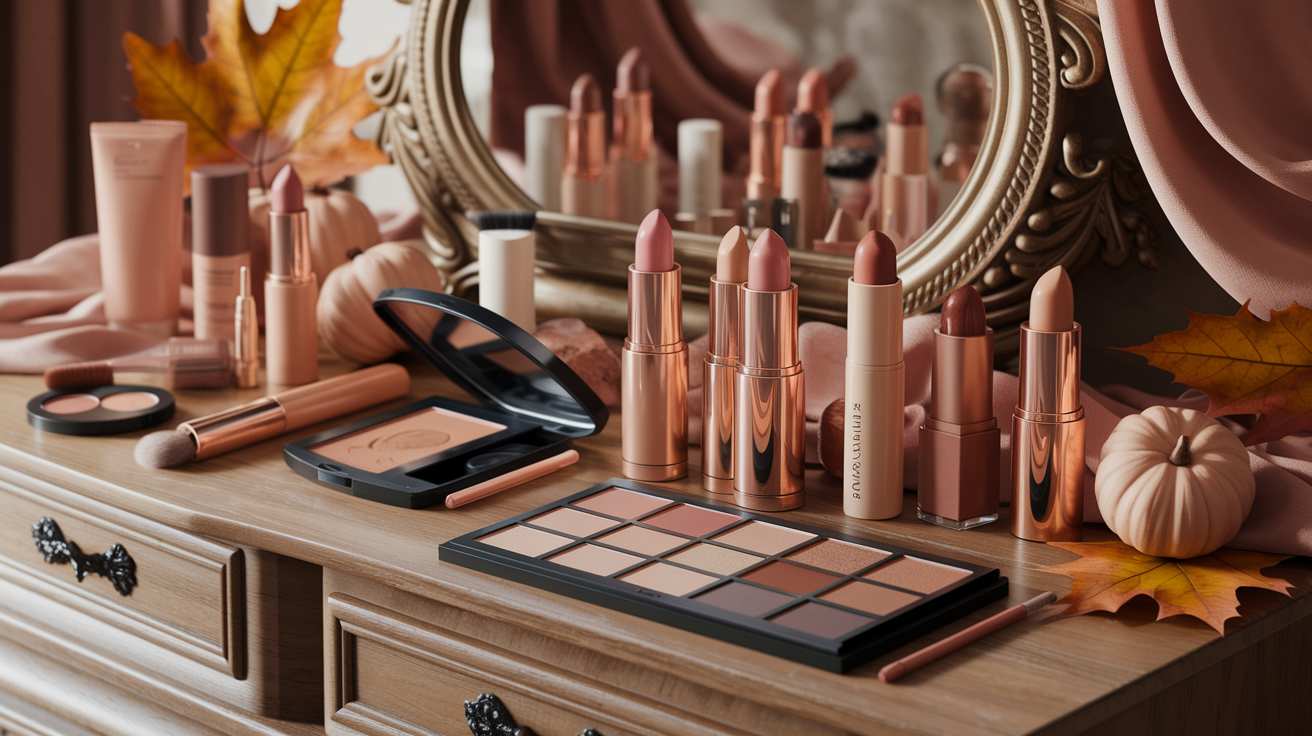
Soft autumn makeup emphasizes natural warmth and muted shades, mirroring the gentle shifts of fall. They usually have warm undertoned skin, brown-ish hair—occasionally with golden or auburn nuances—and summer-glowed complexions. Makeup colors are a must too, as strong or bright colors can appear harsh and ruin the overall harmony.
Focusing on highlighting features with earthy tones, the aim is to keep the appearance natural and chic.
Foundation and Concealer
Your perfect base begins with a foundation that complements the soft autumn skin's warm undertones. Search for warm beige, soft caramel or golden sand hues. These meld into the skin, never standing out in harsh contrast.
Matte and satin finishes are the best, giving a natural, non-shiny appearance that complements the subtle palette. Concealers should have these warm undertones as well. Stay away from excessively yellow or pink alternatives.
Instead, opt for concealers in muted peach or soft apricot, which seamlessly blend and color-correct any discolouration without making you look like you're wearing a mask. These base products don't conceal so much as they even out your skin and let that natural glow shine through.
If you apply foundation with a sponge or brush, apply it in thin layers to create a soft, skin-like finish. The goal is to maintain the makeup light and breathable, never heavy or cakey.
EMBRACING NATURAL BEAUTY This approach pays homage to the soft autumn's coloring — allowing freckles or highlights to peek through.
Eyes and Brows
- Some great eye makeup colors for soft autumns are olive green, soft bronze, warm taupe, camel and muted gold. Deep browns and mossy greens work, providing depth without harshness.
- Defining the brows is key. Brows that frame your face and offer soft balance. Select brow powders or pencils that are a shade lighter than natural hair, ideally warm brown or taupe. Stay away from dark or ashy colors.
- For a soft, natural eye, apply shadows in earthy colors and blend the edges well. Steer clear of harsh lines. Choose brown or olive eyeliner and soft brown mascara for accents.
- Earthy tones in eye makeup reflect the soft autumn palette, adding harmony and elegant subtlety. These colors lull in harmony, allowing the eyes to stand out softly.
Cheeks and Lips
Blush is your natural flush, so imagine muted rose, peach or warm apricot. Cream or powder formulas in these colors promote a healthy glow without being heavy-handed.
Lip colors fare best in warm, earthy tones such as terracotta, muted coral, and caramel. Stay away from bright reds or cool pinks. Seek out satin or matte textures for a natural finish.
Use blush sparingly and blend well into the skin, and select lipsticks that compliment your lips' natural shape instead of overpowering them. Together, these touches keep the look fresh and polished.
Cheek and lip colors, when selected carefully, tie the entire look together. They accentuate the soft autumn's inherent beauty, putting a lid on an overall polished makeup look.
Conclusion
Soft autumn colors create soft warm outfits that flatter a variety of complexions. Think moss green, camel, soft gold and rose brown. These colors emphasize warm without high contrast. Stick around these soft colors for clothes and makeup. The difference is immediate—skin appears more even, hair captures glow, eyes pop. Avoid those colors that feel harsh or icy—those will tend to drown out the softness of soft autumn. Do a simple experiment at home—bring a moss sweater or warm brown scarf by your face and then test a bright or cool blue. The right match sounds quiet and effortless, not boisterous. Try adding one new color this week. Note how it shifts the vibe of your fashion.
Frequently Asked Questions
What is a Soft Autumn color palette?
Soft Autumn colors encompass soft, muted shades with warmth, including earthy hues like olive green, soft brown, and warm beige, which beautifully complement the soft autumn hair color of individuals with warm undertones.
How can I tell if I am a Soft Autumn?
With your warm, muted tones in skin, hair, and eyes, you likely belong to the Soft Autumn category, thriving in earthy colors. A professional seasonal colour analysis can provide more precise insights.
Which colors should Soft Autumns avoid?
Soft Autumns want to steer clear of harsh, cool and bright shades like pure white, black and icy blues. These shades can wash out their inherent warmth and softness, causing their features to appear lifeless.
Can Soft Autumns wear black?
Black, as you can imagine, is not good for soft autumn types because it's too harsh against their soft autumn colors. Instead, deep browns or soft charcoals are a more flattering option.
What fabrics work best for a Soft Autumn wardrobe?
Soft, natural fabrics like cotton, linen, and wool complement the soft autumn colors palette. These materials accentuate the warm hues and establish a cozy, coordinated appearance.
Are there makeup tips for Soft Autumns?
Soft Autumns shine in warm, soft autumn colors and makeup shades. Opt for peachy blush, warm browns eyeshadow, and soft coral or nude lips to complement their soft autumn hair color.
Can Soft Autumns wear prints and patterns?
Yes, Soft Autumns can wear prints! Opt for patterns with soft edges in soft autumn colours, like light florals or pale geometrics in muted, natural tones that complement the soft autumn style.